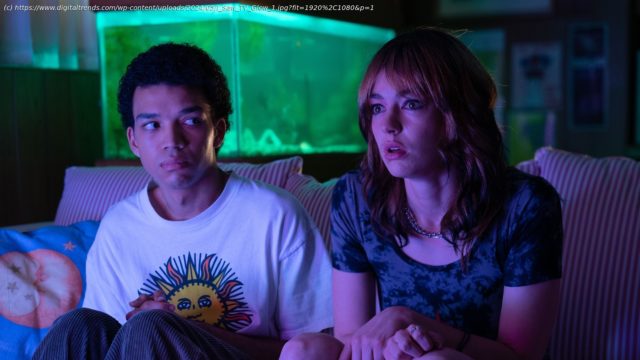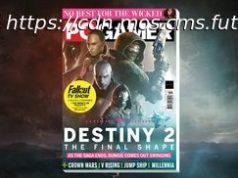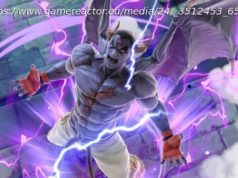Jane Schoenbrun’s spooky A24 indie I Saw the TV Glow captures a precise moment in American culture — the last gasp of analog fandom before the internet age.
The characters in Jane Schoenbrun’s haunting new indie reverie I Saw the TV Glow first bond over an episode guide. Not a TV show. The official guide for a TV show. Introverted suburban teenager Owen (Ian Foreman as a 7th grader, Justice Smith thereafter) will eventually become obsessed with The Pink Opaque, a chintzy cable series about two junior-high girls from different towns who forge a psychic bond to battle supernatural forces. But before going full fan, Owen is drawn to the authorized print companion he spots the slightly older Maddy (Brigette Lundy-Paine) flipping through after school.
If you came of age in the 1990s watching shows like The X-Files and Buffy the Vampire Slayer — network watercooler sensations that sat at the intersection of mainstream success and cult appeal — you may well have owned one of these tie-in books, whose glossy pages offered full-color images, tidbits of behind-the-scenes trivia, and summaries of the tangled mythology that connected each weekly installment. Such trusty almanacs of lore were the bibles of late-20th-century fandom. Today, they look like relics of an older era, rendered obsolete by the mass hissing of modems. Eventually, all the information contained between their shiny covers could be found at the click of a mouse instead.
That fictional book for a fictional show is just one telling, evocative detail that ties I Saw the TV Glow to a very particular time period. Though the plot ultimately races forward through the years, a significant stretch of it takes place in the late ’90s, specifically 1996 and 1998 – what you could call the heyday of episode guides, right before everyone took their lives and interests online. It’s one thing to accurately capture the look and vibe of a past decade, but Schoenbrun does something more uncanny still: They create a snapshot of a lonely micro moment, the last gasp of analog fandom at the dawn of the internet era.
Schoenbrun is fast becoming an expert at plugging into the very soul of a culture. The writer-director’s remarkable first feature, the microbudget We’re All Going to the World’s Fair, told a drama of online preoccupation through the language of viral videos and creepypasta horror. Few movies before or since have better understood the internet as a machine for reinvention. Was the film’s isolated teenage heroine finding or losing herself by plunging down the rabbit hole of role-playing? Was this a story of hard-earned belonging or radicalization? That it’s tough to say is indicative of Schoenbrun’s shrewd ambivalence, though, of course, there was a larger metaphor to be found in the mystery.
Home
United States
USA — software 2024’s weirdest movie is a haunted flashback for the Nickelodeon generation






